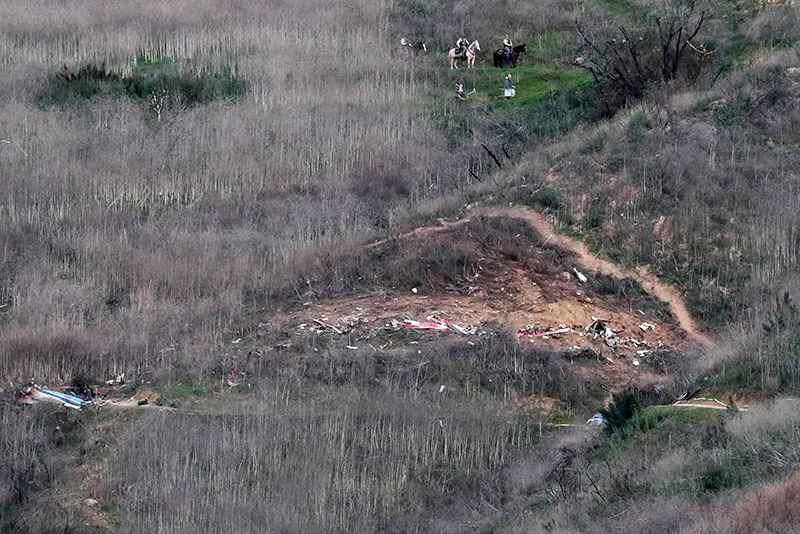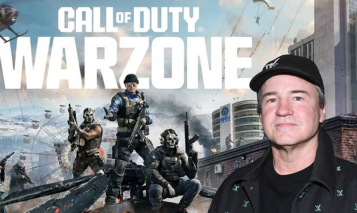
An eyewitness says Kobe Bryant’s pilot, Ara Zobayan, 50, was flying in a circle “aggressively,” about 30 minutes before the helicopter crashed into a mountain above Calabasas, California.
The helicopter went down about 30 miles northwest of downtown Los Angeles at 9:47 a.m. Sunday, killing the 41-year-old NBA legend, his daughter Gianna, 13, and six other passengers.
An eyewitness captured the moment Bryant’s helicopter was circling over Glendale, California for 15 minutes in foggy weather.
“I try and video/photograph all the weird stuff happening above my house in Glendale, CA,” a Twitter user wrote under the handle @theironlydreams.
“Unfortunately this morning I didn’t realize I was filming the helicopter Kobe Bryant, his daughter and others were in 31 minutes before they crashed.”
According to a tweet from the same user, the pilot was performing a very aggressive circling maneuver, that’s why I went outside to Film because it was so loud.”
The user said the Sikorsky S-76B chopper was flying lower and lower over his house, “engine maxed.”
Robert Ditchey, a veteran pilot, aeronautical engineer and former airline executive, told USA Today that the crash was “totally avoidable”.
“And on the part of some people I can go as far as to say irresponsible,” Ditchey said.
Aviation experts who studied the helicopter’s bizarre flight path and weather maps observed that the pilot flew away from the airport and he had enough visibility to see the hills before he flew into them.
Aviation officials and law enforcement officials are reportedly investigating whether Zobayan was suicidal at the time of the crash.
Federal aviation officials are looking into Zobayan’s background and interviewing his friends and family to determine whether he had financial or personal problems.
“All signs point to a CFIT [controlled flight into terrain],” an aviation source told The Washington Examiner.
A controlled flight into terrain is an accident in which a pilot intentionally or inadvertently flies an aircraft into the ground, a mountain, a body of water, or an obstacle such as a building.

An air traffic controller warned Zobayan at least twice that he was flying too low to be tracked by radar.
Audio captured by LiveATC.net revealed that the pilot said he was climbing to avoid clouds when he suddenly veered off path above U.S. Route 101. Seconds later, he crashed into the hillside.
The transmissions between the pilot and the tower reveals the air traffic controllers didn’t know what Zobayan was doing.
Minutes before the crash, a controller told Zobayan “you’re still too low level” to be tracked by radar.
About four minutes later, “the pilot advised they were climbing to avoid a cloud layer,” Jennifer Homendy of the National Transportation Safety Board (NTSB) said Monday.
It was the pilot’s last contact with the tower.
“When ATC asked what the pilot planned to do, there was no reply,” Homendy said. Radar indicates the helicopter climbed to 2,300 feet and then began a left descending turn.”
Two minutes later, someone called 911 to report the crash.
Zobayan was flying under visual flight rules (VFR), meaning he was relying on his eyesight to see the ground below him rather than using the helicopter’s more accurate instrument panel to determine his elevation.
Aviation experts say a pilot with Zobayan’s experience should have avoided the hills in dense fog, not flown toward them.
Flight tracking data shows the pilot flying erratically up, down, sideways, up then rapidly descending 1,700 feet.
The helicopter was flying at 184mph and descending at a rate of 4,000 feet per minute when it struck the hillside, according to Flightradar24.
The rapid ascents and descents would have sparked terror among the passengers.
At the time of the crash, the fog ceiling was about 1,300 feet above ground with a visibility of 5 miles. The pilots believe Zobayan would have seen the mountain before he flew into it.





